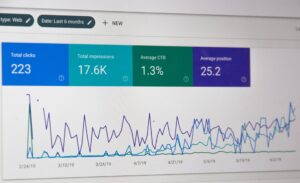Global video traffic already accounts for a sizable share of internet bandwidth and, by extension, electricity use. As viewing habits shift from broadcast towers to data centers, concerns arise about the environmental footprint of on-demand streaming. Atlas Pro max, however, offers a set of tools and practices capable of trimming energy consumption while still delighting audiences.
Efficient Codecs and Bitrate Management
The bulk of streaming power draw occurs during encoding and decoding. New compression standards slash data volumes by applying advanced prediction, vectorization, and neural interpolation. Traffic shaping then matches bitrate to actual screen size and motion complexity rather than applying a fixed ceiling. Less data sent means fewer router cycles and reduced cooling demand in transit networks.
Renewable-Powered Edge Nodes
Placing cache servers near users curtails long-haul traffic, yet those servers need electricity as well. Operators now deploy micro-data centers that run on onsite solar arrays supplemented by battery storage. During peak sunshine, these nodes pre-fetch popular titles for evening viewing. The approach shifts energy use away from fossil-fuel-dominated night-time grids.
Demand-Response Streaming
Grid operators sometimes request lower consumption during critical periods. IPTV middleware can comply automatically by nudging video quality down a notch, an adjustment many viewers hardly notice on smaller screens. In return, utilities offer discounted rates that providers reinvest in renewable certificates or energy-efficiency upgrades.
Device Longevity Through Software Updates
Constant hardware churn contributes to electronic waste. Because IPTV relies on standardized protocols, manufacturers can push new features through firmware upgrades instead of new boxes. A set-top unit bought last decade still handles modern streams once a software patch enables updated codecs. Extending hardware lifespans keeps plastic, rare earth metals, and circuit boards out of landfills.
Data-Driven Carbon Accounting
Accurate measurement underpins meaningful improvement. Advanced analytics track watt-hours per minute streamed, broken down by region, codec, and time slot. Providers publish transparent reports, letting consumers weigh environmental footprint alongside price and content library when choosing services. Early adopters of such disclosure often see subscriber loyalty rise, proving that sustainability can coexist with commercial success.
Community Impact
Energy savings scale beyond individual households. Municipal broadband cooperatives that host IPTV head-ends locally keep heat output near facilities that can capture it for district heating. Waste warmth from servers heats water for swimming pools or greenhouses, closing resource loops that would be impossible with satellite downlinks alone.
A Responsible Path Forward
Television will always consume energy, yet the shift to IP delivery creates levers for meaningful reductions. Codec innovation, renewable caches, adaptive quality, and extended hardware lifecycles together carve a lighter footprint without sacrificing convenience. By adopting these measures, the streaming industry turns environmental responsibility from an afterthought into a standard feature—one frame at a time.


















